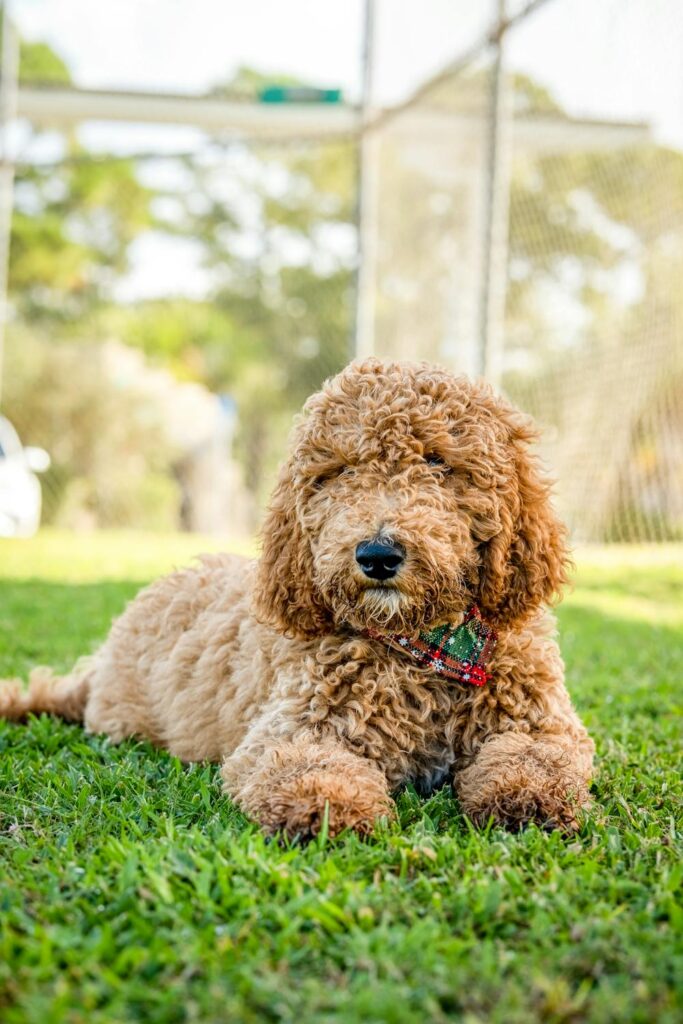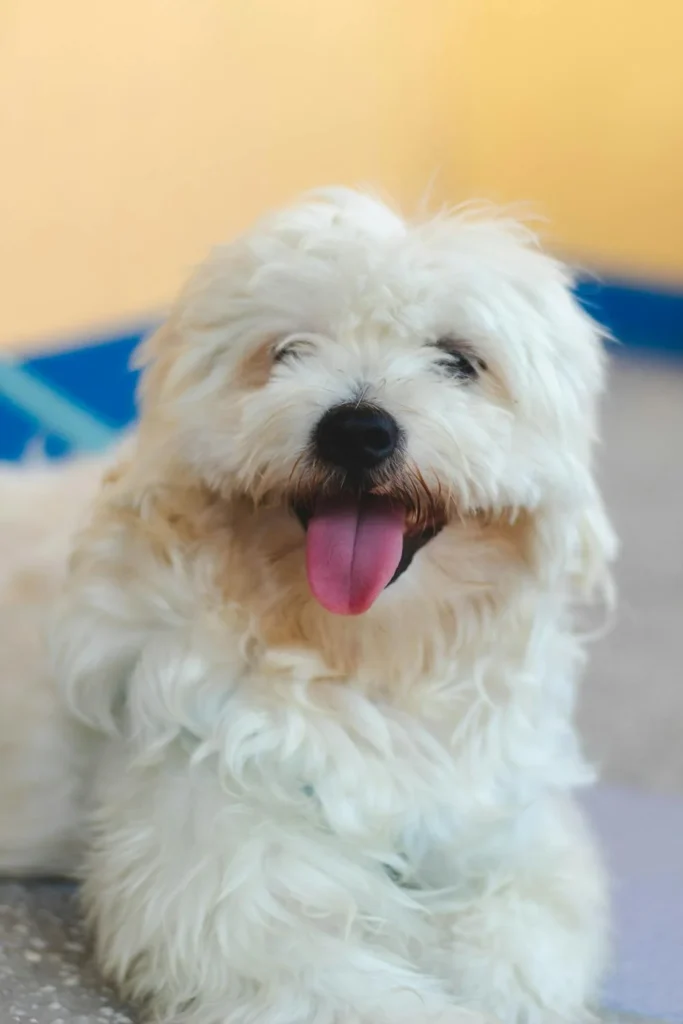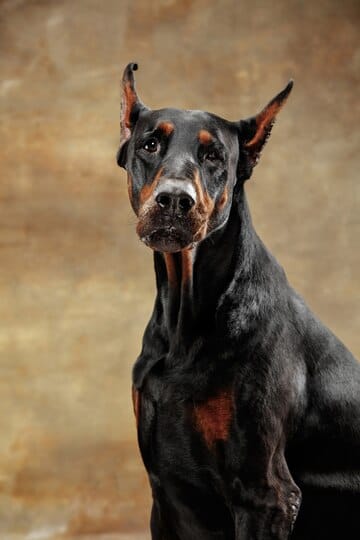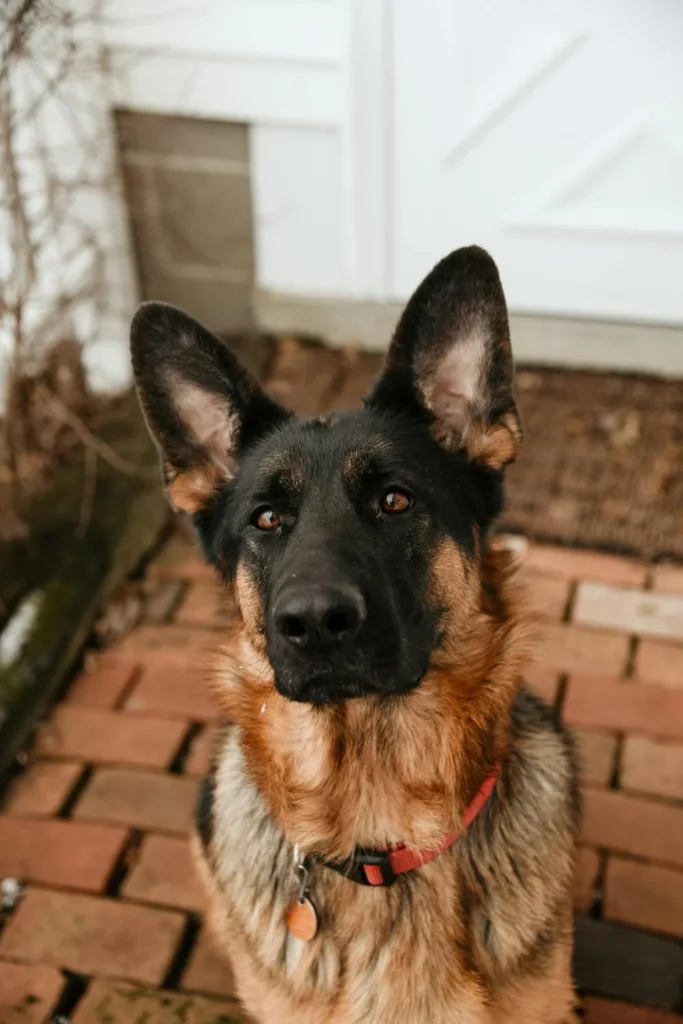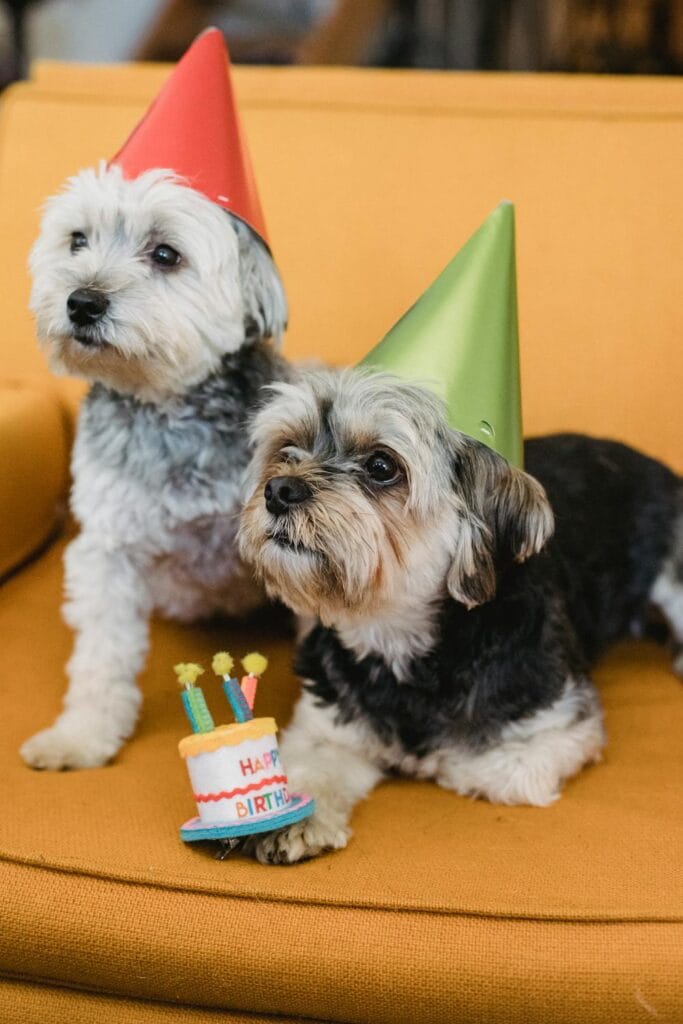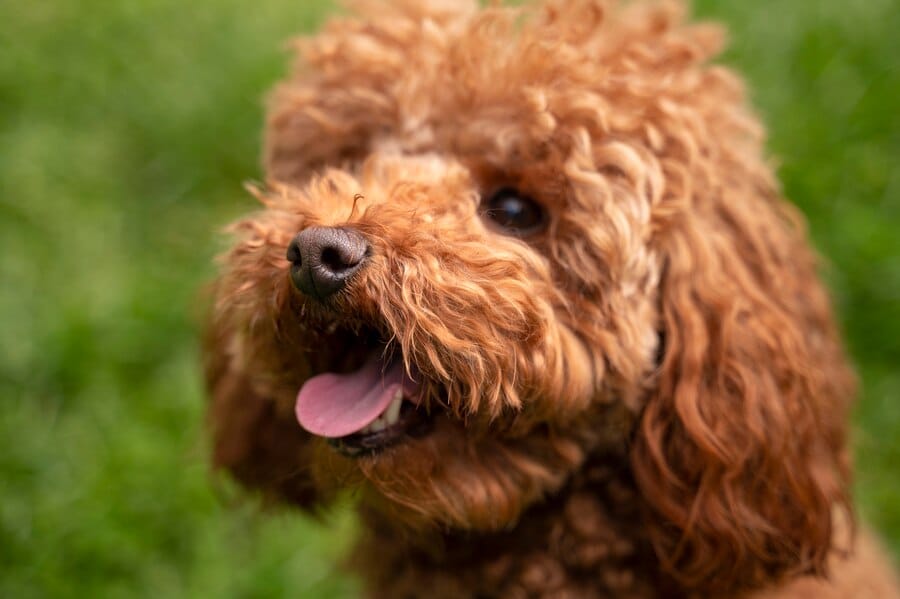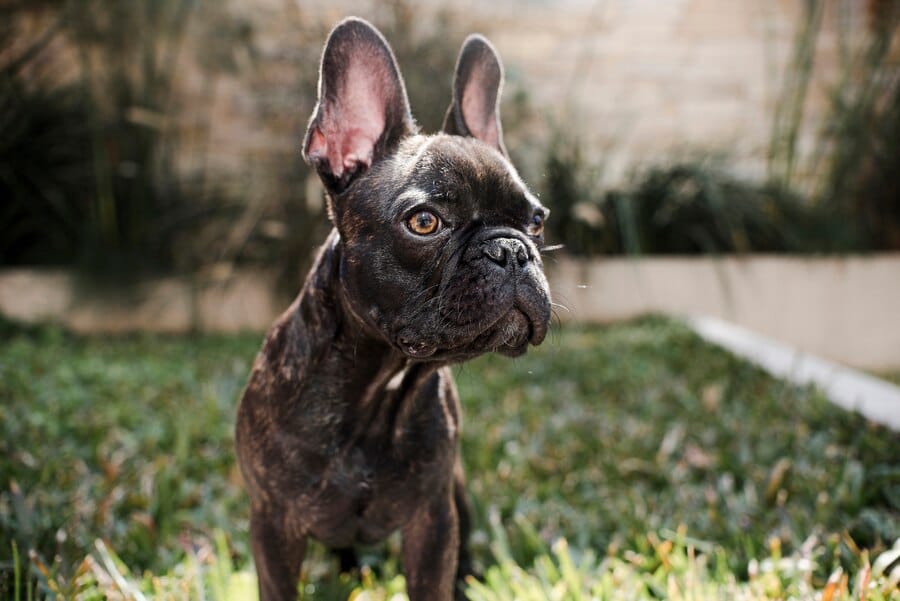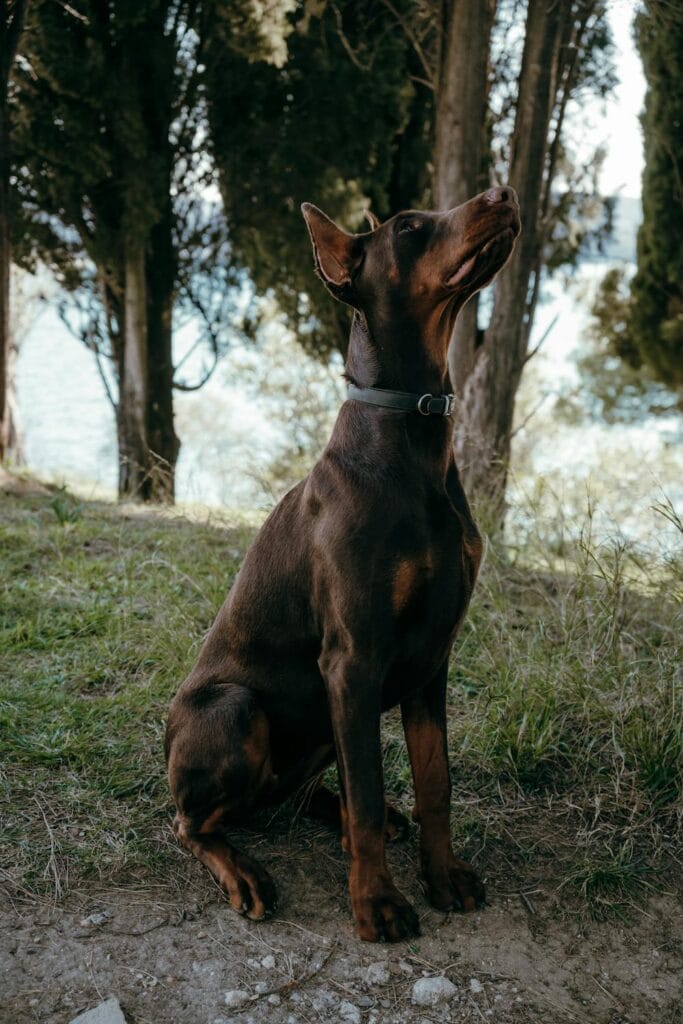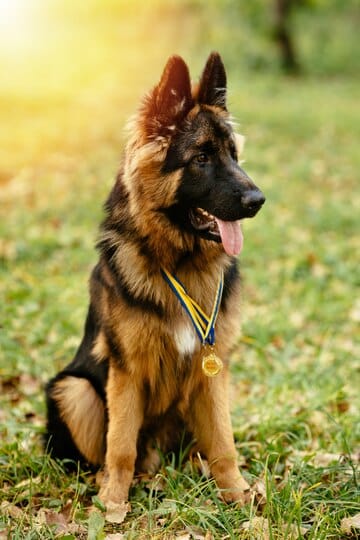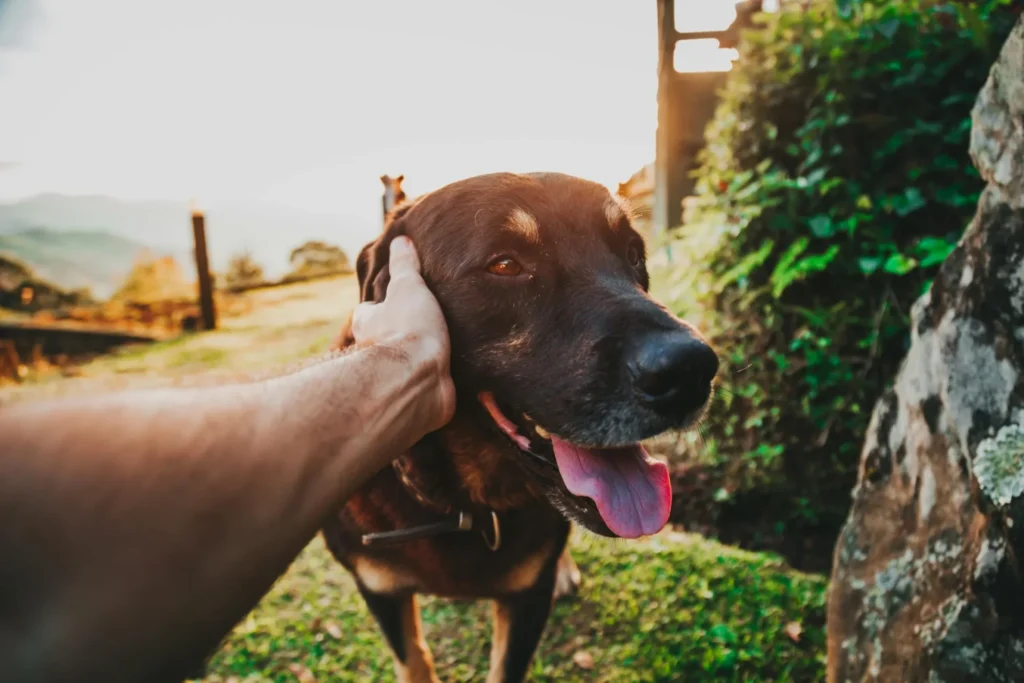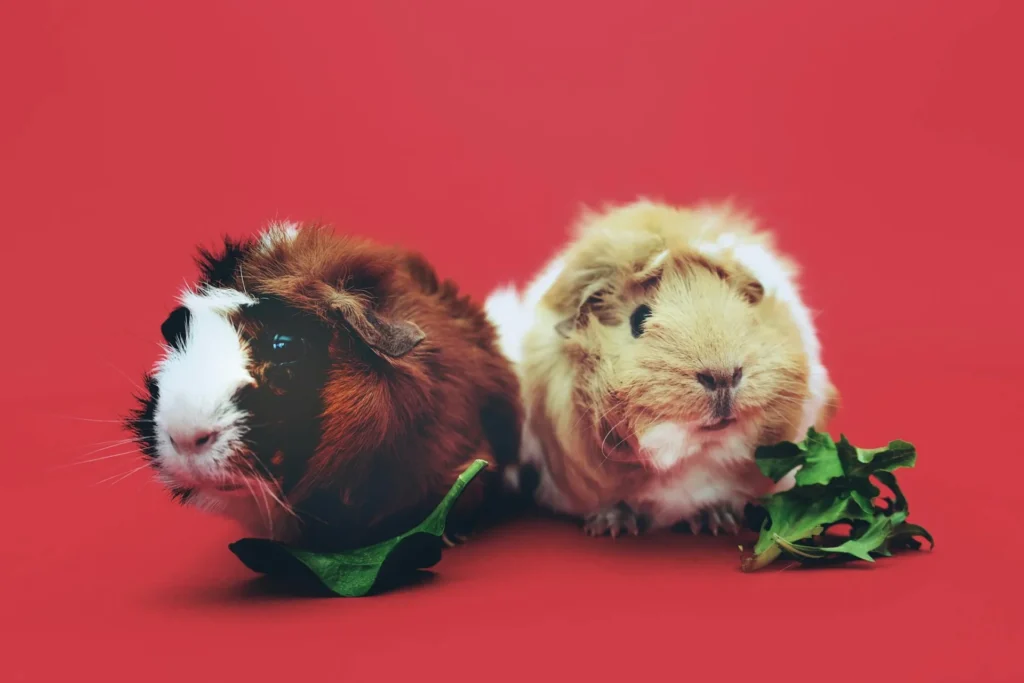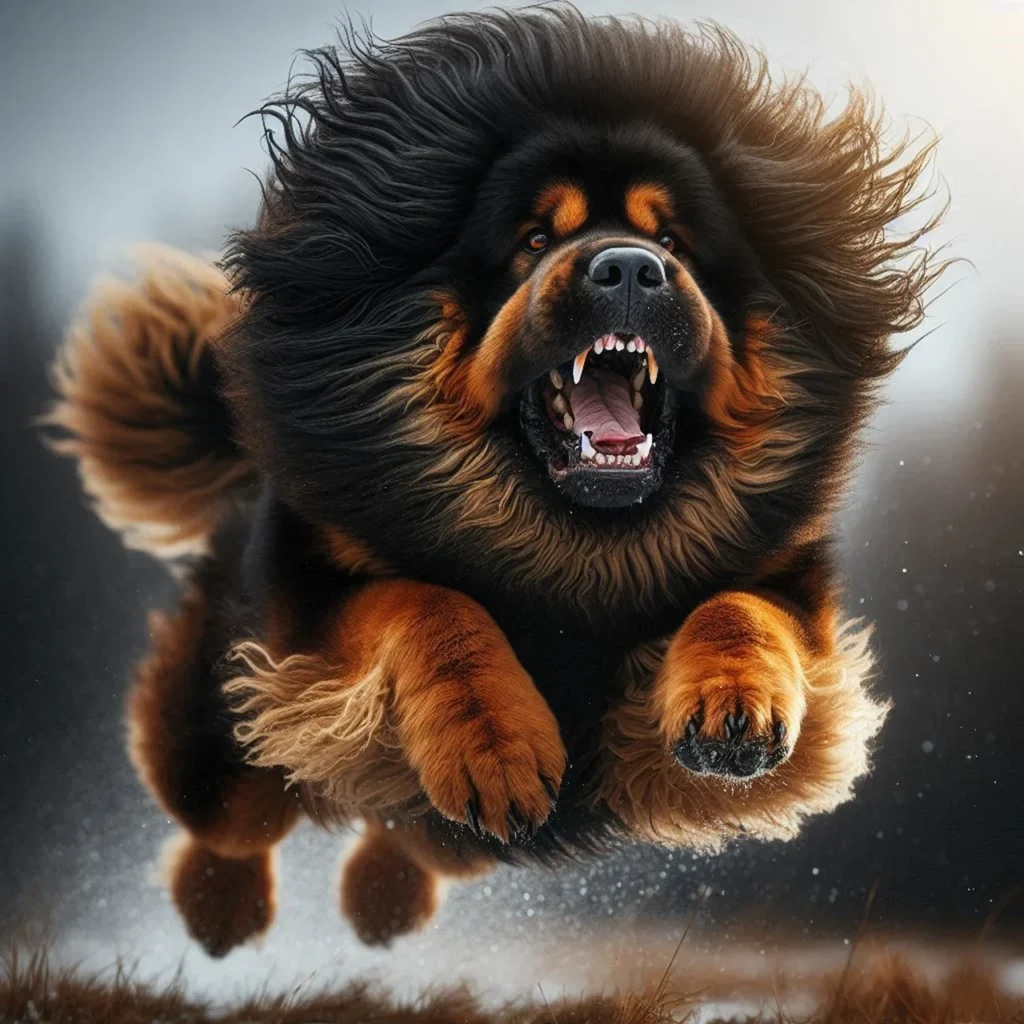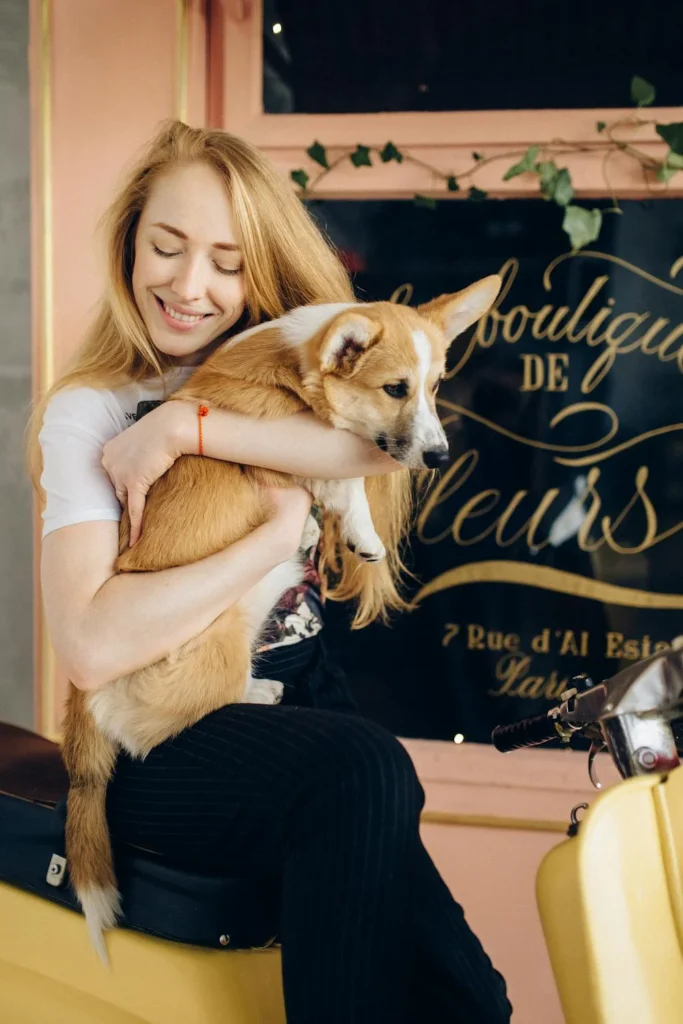- Introduction: The Doodle Dog Phenomenon 🌟
- What Are Doodle Dogs? Unraveling the Mystery 🕵️♀️
- The Doodle Origin Story: From Royal Roots to Everyday Companions 👑➡️🏠
- How Are Doodles Made? The Science Behind the Fluff 🧬🔬
- Popular Doodle Breeds: A Parade of Poodle Mixes 🐩🌈
- More Doodle Varieties: Exploring the Extended Poodle Mix Family 🌈🐕
- The Doodle Advantage: Why These Hybrids Are So Popular 🏆
- Doodle Dog Care: Keeping Your Curly Companion Happy 💖
- The Doodle Debate: Addressing Controversies and Misconceptions 🤔
- Doodle Dogs in Popular Culture: From Social Media Stars to Service Animals 🌟
- The Future of Doodle Dogs: Trends and Predictions 🔮
- Choosing Your Doodle: Finding the Perfect Fluffy Friend 🐾❤️
- The Science of Doodle Genetics: Understanding Inheritance Patterns 🧬🔬
- Doodle Dogs Around the World: Global Popularity and Variations 🌍
- The Working Doodle: Beyond Pet Status 🦮💼
- Doodle Health: Common Concerns and Preventative Care 🏥💉
- The Doodle Community: Connecting with Fellow Doodle Enthusiasts 🤝🐾
- Training Your Doodle: Tips for Success 🎓🦴
- The Doodle Diet: Nutrition for Optimal Health 🍽️🥩
- Doodle Grooming: Maintaining That Signature Fluffy Look 💇♀️✨
- The Doodle Lifestyle: Adapting to Your Fluffy Friend 🏡🐾
- Doodle Behavior: Understanding Your Curly Companion 🧠🐶
- The Doodle Decision: Is a Doodle Right for You? 🤔💭
- Doodle Adoption: Giving a Home to a Fluffy Friend in Need 🏠❤️
- The Doodle Economy: A Booming Industry 💼💰
- Doodle Dogs in Research: Contributing to Canine Science 🔬🧪
- The Global Doodle Scene: International Perspectives 🌍🗺️
- Doodle Diversity: Celebrating Unique Coats and Colors 🌈🎨
- The Doodle Debate: Addressing Controversies 🗣️💬
- Doodle Dogs in Popular Culture: From Social Media to the Silver Screen 🎬📱
- The Future of Doodle Dogs: Trends and Predictions 🔮🐾
- Doodle Dog FAQ: Answering Common Questions 🤔💡
- Conclusion: Embracing the Doodle Dog Experience 🎉🐶
Introduction: The Doodle Dog Phenomenon 🌟
In the world of canine companions, few breeds have captured hearts quite like doodle dogs. These charming hybrids have taken the pet world by storm, combining the best traits of poodles with other beloved breeds. But what exactly are doodle dogs, and how are they created? Let’s embark on a fascinating journey into the world of these curly-coated cuties!
What Are Doodle Dogs? Unraveling the Mystery 🕵️♀️
Doodle dogs, at their core, are hybrid breeds that result from crossing a poodle with another purebred dog. The term “doodle” typically refers to any poodle mix, though some of the most popular combinations have their own specific names.
Key Characteristics of Doodle Dogs:
- Hybrid vigor: Often healthier than purebred parents due to genetic diversity.
- Intelligent: Inherit the poodle’s sharp mind.
- Low-shedding: Many (but not all) have hypoallergenic coats.
- Friendly: Known for their sociable and affectionate nature.
- Versatile: Come in various sizes, colors, and coat types.
The Doodle Origin Story: From Royal Roots to Everyday Companions 👑➡️🏠
The doodle craze began in the 1980s with a specific goal in mind:
- Wally Conron’s vision: Australian breeder Wally Conron aimed to create a hypoallergenic guide dog.
- The first Labradoodle: Sultan, a Labrador-Poodle mix, became the world’s first intentional Labradoodle.
- Unexpected popularity: The breed’s appeal quickly spread beyond service dog circles.
- Expansion of doodle types: Soon, other poodle mixes followed, creating the diverse doodle family we know today.
How Are Doodles Made? The Science Behind the Fluff 🧬🔬
Creating a doodle dog involves carefully selected breeding between a poodle and another purebred dog. Let’s break down the process:
- Parent selection: Breeders choose healthy, temperamentally sound parents.
- Genetic considerations: Factors like size, coat type, and health are evaluated.
- Breeding: The poodle is bred with the chosen partner breed.
- Gestation and birth: Puppies are born after about 63 days.
- Early care: Crucial socialization and health checks in the first weeks.
Doodle Generations: Decoding the “F” Factor
Doodle breeding involves various generations, each with its own characteristics:
| Generation | Description | Typical Traits |
|---|---|---|
| F1 | 50% Poodle, 50% Partner breed | Most diverse in appearance and traits |
| F1b | 75% Poodle, 25% Partner breed | Often more hypoallergenic |
| F2 | F1 x F1 | Highly variable traits |
| F2b | F1 x F1b | More consistent traits |
| F3 and beyond | Multi-generational breeding | Increasingly stable characteristics |
Popular Doodle Breeds: A Parade of Poodle Mixes 🐩🌈
Let’s explore some of the most beloved doodle varieties:
1. Labradoodle (Labrador Retriever + Poodle)
| Trait | Description |
|---|---|
| Size | Medium to Large |
| Coat | Wavy to Curly |
| Temperament | Friendly, Energetic |
| Shedding | Low to Moderate |
| Exercise Needs | High |
| Intelligence | Very High |
Labradoodles combine the Labrador’s friendly nature with the Poodle’s intelligence, creating an ideal family pet.
2. Goldendoodle (Golden Retriever + Poodle)
| Trait | Description |
|---|---|
| Size | Medium to Large |
| Coat | Wavy to Curly |
| Temperament | Gentle, Affectionate |
| Shedding | Low to Moderate |
| Exercise Needs | Moderate to High |
| Intelligence | Very High |
Goldendoodles are known for their sweet dispositions and adaptability to various living situations.
3. Bernedoodle (Bernese Mountain Dog + Poodle)
| Trait | Description |
|---|---|
| Size | Medium to Large |
| Coat | Wavy to Curly |
| Temperament | Loyal, Calm |
| Shedding | Low |
| Exercise Needs | Moderate |
| Intelligence | High |
Bernedoodles offer the gentle giant qualities of the Bernese with the Poodle’s intelligence and low-shedding coat.
4. Aussiedoodle (Australian Shepherd + Poodle)
| Trait | Description |
|---|---|
| Size | Medium |
| Coat | Wavy to Curly |
| Temperament | Energetic, Intelligent |
| Shedding | Low |
| Exercise Needs | High |
| Intelligence | Very High |
Aussiedoodles are vibrant, clever dogs that excel in various activities and sports.
5. Schnoodle (Schnauzer + Poodle)
| Trait | Description |
|---|---|
| Size | Small to Medium |
| Coat | Wavy to Curly |
| Temperament | Playful, Alert |
| Shedding | Low |
| Exercise Needs | Moderate |
| Intelligence | High |
Schnoodles combine the Schnauzer’s spunk with the Poodle’s smarts, making for a lively companion.
More Doodle Varieties: Exploring the Extended Poodle Mix Family 🌈🐕
Let’s dive into some lesser-known but equally charming doodle varieties:
6. Sheepadoodle (Old English Sheepdog + Poodle)
| Trait | Description |
|---|---|
| Size | Large |
| Coat | Long, Wavy to Curly |
| Temperament | Gentle, Playful |
| Shedding | Low |
| Exercise Needs | Moderate |
| Intelligence | High |
Sheepadoodles combine the Old English Sheepdog’s gentle nature with the Poodle’s intelligence.
7. Cavapoo (Cavalier King Charles Spaniel + Poodle)
| Trait | Description |
|---|---|
| Size | Small |
| Coat | Soft, Wavy to Curly |
| Temperament | Affectionate, Gentle |
| Shedding | Low |
| Exercise Needs | Low to Moderate |
| Intelligence | High |
Cavapoos are known for their sweet dispositions and adaptability to apartment living.
8. Whoodle (Soft-Coated Wheaten Terrier + Poodle)
| Trait | Description |
|---|---|
| Size | Medium |
| Coat | Soft, Wavy to Curly |
| Temperament | Energetic, Friendly |
| Shedding | Low |
| Exercise Needs | Moderate to High |
| Intelligence | High |
Whoodles blend the Wheaten Terrier’s spunk with the Poodle’s smarts.
9. Bordoodle (Border Collie + Poodle)
| Trait | Description |
|---|---|
| Size | Medium |
| Coat | Wavy to Curly |
| Temperament | Intelligent, Energetic |
| Shedding | Low |
| Exercise Needs | High |
| Intelligence | Very High |
Bordoodles are incredibly smart and require plenty of mental and physical stimulation.
10. Saint Berdoodle (Saint Bernard + Poodle)
| Trait | Description |
|---|---|
| Size | Large to Giant |
| Coat | Dense, Wavy to Curly |
| Temperament | Gentle, Patient |
| Shedding | Low to Moderate |
| Exercise Needs | Moderate |
| Intelligence | High |
Saint Berdoodles offer the Saint Bernard’s gentle giant qualities with a potentially lower-shedding coat.
The Doodle Advantage: Why These Hybrids Are So Popular 🏆
Doodle dogs have surged in popularity for several compelling reasons:
- Hypoallergenic potential: Many doodles inherit the Poodle’s low-shedding coat.
- Diverse sizes: From tiny Toy Poodle mixes to large Standard Poodle crosses.
- Intelligence: Poodles are among the smartest dog breeds, a trait often passed to doodles.
- Adaptability: Many doodles suit various lifestyles and living situations.
- Friendly nature: Known for being sociable with people and other pets.
Doodle Dog Care: Keeping Your Curly Companion Happy 💖
Caring for a doodle involves several key aspects:
1. Grooming 🛁
- Regular brushing (often daily) to prevent matting
- Professional grooming every 6-8 weeks
- Attention to ears, eyes, and dental hygiene
2. Exercise 🏃♀️
- Daily walks and playtime
- Mental stimulation through training and puzzle toys
- Adjust based on the specific doodle breed and individual dog’s needs
3. Training 🎓
- Start early with positive reinforcement techniques
- Socialization is crucial in the first few months
- Ongoing training to keep their minds active
4. Nutrition 🍽️
- High-quality dog food appropriate for their size and activity level
- Monitor portion sizes to prevent obesity
- Consider any breed-specific dietary needs
5. Health Care 🏥
- Regular vet check-ups
- Stay up-to-date on vaccinations and preventative care
- Be aware of potential genetic health issues from both parent breeds
The Doodle Debate: Addressing Controversies and Misconceptions 🤔
While doodles are beloved by many, they’re not without controversy:
- Designer dog debate: Some argue against intentional mixed breeding.
- Genetic health concerns: Potential for inheriting issues from both parent breeds.
- Coat maintenance myths: Not all doodles are low-maintenance or hypoallergenic.
- Overbreeding concerns: Popularity has led to some irresponsible breeding practices.
- Cost considerations: Doodles can be more expensive than many purebred dogs.
Doodle Dogs in Popular Culture: From Social Media Stars to Service Animals 🌟
Doodles have made quite an impact on popular culture:
- Instagram famous: Many doodles have large social media followings.
- Celebrity pets: Several high-profile individuals own and love doodles.
- Service and therapy work: Doodles often excel in supportive roles.
- Children’s books: Doodles feature in various kid-friendly literature.
- Marketing appeal: Their cute looks make them popular in advertising.
The Future of Doodle Dogs: Trends and Predictions 🔮
What’s next for the world of doodles?
- New mixes: Continued experimentation with different poodle crosses.
- Health focus: Increased emphasis on genetic testing and health clearances.
- Standardization debates: Discussions about whether to standardize popular doodle types.
- Ethical breeding practices: Growing awareness and demand for responsible breeding.
- Continued popularity: Doodles likely to remain favored pets for years to come.
Choosing Your Doodle: Finding the Perfect Fluffy Friend 🐾❤️
If you’re considering a doodle, here are some factors to weigh:
- Size preferences: From tiny Toy Poodle mixes to large Standard Poodle crosses.
- Activity level: Match the dog’s energy to your lifestyle.
- Coat type: Consider grooming requirements and allergen sensitivities.
- Temperament: Research the characteristics of both parent breeds.
- Health considerations: Be aware of potential genetic issues.
- Ethical sourcing: Choose reputable breeders or consider adoption.
The Science of Doodle Genetics: Understanding Inheritance Patterns 🧬🔬
Doodle genetics can be complex, involving various factors:
- Coat type genes: Multiple genes influence curl, length, and texture.
- Color inheritance: Poodle color genetics can create diverse offspring colors.
- Size genes: Determined by multiple genes, often resulting in a range of sizes within a litter.
- Health-related genes: Important to understand potential inherited conditions.
- Trait predictability: Increases with each generation of careful breeding.
Doodle Dogs Around the World: Global Popularity and Variations 🌍
Doodles have gained popularity worldwide, with some interesting regional trends:
- Australia: Birthplace of the Labradoodle, with strong doodle enthusiasm.
- United States: Wide variety of doodle types, with regional preferences.
- United Kingdom: Growing doodle popularity, especially Cockapoos and Labradoodles.
- Europe: Varied acceptance, with some countries favoring certain doodle types.
- Asia: Increasing interest, particularly in smaller doodle varieties.
The Working Doodle: Beyond Pet Status 🦮💼
Many doodles excel in various working roles:
- Service dogs: Assisting individuals with disabilities.
- Therapy dogs: Providing comfort in hospitals, schools, and care facilities.
- Search and rescue: Utilizing their intelligence and trainability.
- Agility and sport: Excelling in dog sports due to their athleticism.
- Detection work: Some doodles are trained for scent detection tasks.
Doodle Health: Common Concerns and Preventative Care 🏥💉
While generally healthy, doodles can be prone to certain health issues:
- Hip dysplasia: Common in larger doodle varieties.
- Eye problems: Including progressive retinal atrophy and cataracts.
- Ear infections: Due to floppy ears and hair growth in ear canals.
- Allergies: Some doodles may develop skin allergies.
- Addison’s disease: More common in some doodle types, particularly Standard Poodle mixes.
Preventative care is crucial:
- Regular vet check-ups
- Genetic health testing for breeding dogs
- Proper diet and exercise
- Dental care and grooming
The Doodle Community: Connecting with Fellow Doodle Enthusiasts 🤝🐾
Doodle ownership often comes with a built-in community:
- Online forums: Platforms for sharing advice and experiences.
- Local meetup groups: Opportunities for doodles and their owners to socialize.
- Breed-specific rescues: Organizations dedicated to rehoming doodles.
- Social media communities: Instagram, Facebook groups, and more.
- Doodle-centric events: From fundraisers to fun runs.
Training Your Doodle: Tips for Success 🎓🦴
Doodles are typically intelligent and eager to please, making them relatively easy to train:
- Start early: Begin socialization and basic training in puppyhood.
- Use positive reinforcement: Reward-based training works well with doodles.
- Consistency is key: Establish clear rules and stick to them.
- Mental stimulation: Incorporate puzzle toys and training games.
- Advanced training: Many doodles excel in obedience, agility, and other dog sports.
The Doodle Diet: Nutrition for Optimal Health 🍽️🥩
Proper nutrition is crucial for your doodle’s health and well-being:
- High-quality protein: Essential for muscle maintenance and growth.
- Balanced nutrients: Appropriate levels of fats, carbohydrates, vitamins, and minerals.
- Age-appropriate food: Puppy, adult, and senior formulas as needed.
- Size-specific diets: Smaller doodles have different needs than larger varieties.
- Consider activity level: Adjust portions based on your doodle’s exercise routine.
Doodle Grooming: Maintaining That Signature Fluffy Look 💇♀️✨
Grooming is a crucial aspect of doodle care, essential for both health and appearance:
- Regular brushing: Daily brushing prevents matting and keeps the coat healthy.
- Use a slicker brush for general grooming
- A metal comb helps work out tangles
- Bathing schedule: Typically every 4-6 weeks, or as needed.
- Use dog-specific shampoos
- Consider conditioners for easier coat management
- Professional grooming: Every 6-8 weeks for most doodles.
- Discuss desired cut with your groomer
- Some owners learn to groom at home
- Ear care: Clean regularly to prevent infections.
- Use a veterinarian-approved ear cleaner
- Pluck ear hair if recommended by your vet
- Nail trimming: Every 2-4 weeks, or as needed.
- Use dog nail clippers or a grinder
- Be cautious of the quick (blood vessel in the nail)
- Dental hygiene: Brush teeth several times a week.
- Use dog-specific toothpaste
- Consider dental chews as supplements
- Eye care: Wipe around eyes to prevent tear staining.
- Use a damp, soft cloth
- Consult vet if excessive tearing occurs
Grooming Tools for Doodle Owners
| Tool | Purpose |
|---|---|
| Slicker brush | Daily brushing and detangling |
| Metal comb | Working out mats and tangles |
| Dematting tool | Removing stubborn mats |
| Grooming scissors | Trimming face, paws, and sanitary areas |
| Nail clippers | Regular nail maintenance |
| Dog-specific shampoo and conditioner | Bathing and coat care |
The Doodle Lifestyle: Adapting to Your Fluffy Friend 🏡🐾
Bringing a doodle into your life often means adjusting your lifestyle:
- Exercise routine: Daily walks and playtime are essential.
- Consider dog parks for socialization
- Puzzle toys for mental stimulation
- Home modifications: Doodle-proofing your living space.
- Secure trash cans (doodles can be curious!)
- Consider baby gates for restricted areas
- Time commitment: Doodles thrive on human interaction.
- Plan for quality time each day
- Consider doggy daycare if you’re away long hours
- Travel plans: Doodles can be great travel companions.
- Research pet-friendly accommodations
- Consider a pet sitter for times you can’t bring them along
- Financial planning: Budget for ongoing care costs.
- Regular vet check-ups
- Grooming expenses
- Quality food and supplies
Doodle Behavior: Understanding Your Curly Companion 🧠🐶
Doodles often exhibit behaviors influenced by both parent breeds:
- Poodle traits:
- High intelligence
- Eagerness to please
- Potential for separation anxiety
- Partner breed traits: Vary based on the specific mix
- Labrador: Friendliness, love of water
- Golden Retriever: Gentle nature, affectionate
- Bernese Mountain Dog: Calm demeanor, loyalty
- Common doodle behaviors:
- Playfulness well into adulthood
- Strong bond with family members
- Potential for mouthiness (gentle nibbling)
- Addressing behavioral issues:
- Consistent training from an early age
- Positive reinforcement techniques
- Professional help for persistent problems
The Doodle Decision: Is a Doodle Right for You? 🤔💭
Before bringing a doodle into your life, consider these factors:
- Time commitment: Can you provide daily exercise and attention?
- Grooming needs: Are you prepared for regular brushing and professional grooming?
- Space requirements: Do you have enough room for a potentially large dog?
- Allergies: While often hypoallergenic, no dog is 100% allergy-free.
- Training dedication: Are you willing to invest time in training and socialization?
- Financial readiness: Can you afford ongoing care costs?
- Lifestyle fit: Does a doodle’s energy level match your lifestyle?
Doodle Adoption: Giving a Home to a Fluffy Friend in Need 🏠❤️
While many doodles come from breeders, adoption is a wonderful option:
- Doodle-specific rescues: Organizations dedicated to rehoming doodles.
- General shelters: Doodles and doodle mixes can sometimes be found in local shelters.
- Online adoption platforms: Websites connecting potential adopters with available doodles.
- Benefits of adopting:
- Giving a home to a dog in need
- Often lower initial costs compared to purchasing from a breeder
- Adult dogs may already have basic training
- Considerations when adopting:
- Limited information about genetic background
- Potential for unknown behavioral issues
- May require extra patience and training
The Doodle Economy: A Booming Industry 💼💰
The popularity of doodles has spawned a significant economic sector:
- Breeding: Professional doodle breeders across the country.
- Specialized products: Doodle-specific grooming tools, toys, and accessories.
- Services: Doodle-focused groomers, trainers, and dog walkers.
- Media: Books, blogs, and social media accounts dedicated to doodles.
- Events: Doodle meetups, competitions, and festivals.
Doodle Dogs in Research: Contributing to Canine Science 🔬🧪
Doodles have become subjects of various scientific studies:
- Genetic research: Understanding inheritance patterns in hybrid breeds.
- Behavioral studies: Comparing doodle behavior to parent breeds.
- Allergy studies: Investigating the hypoallergenic claims of certain doodle types.
- Health research: Tracking health trends in popular doodle varieties.
- Human-animal bond: Studying the unique connections between doodles and their owners.
The Global Doodle Scene: International Perspectives 🌍🗺️
Doodles have gained popularity worldwide, with interesting regional variations:
- Australia: Birthplace of the Labradoodle, strong doodle culture.
- United States: Wide variety of doodle types, regional preferences.
- United Kingdom: Growing popularity, especially of smaller doodle varieties.
- Europe: Varied acceptance, some countries favoring certain doodle types.
- Asia: Increasing interest, particularly in apartment-friendly doodle sizes.
Doodle Diversity: Celebrating Unique Coats and Colors 🌈🎨
Doodles come in a stunning array of coat types and colors:
- Coat types:
- Wool: Tight curls, most similar to poodle coat
- Fleece: Soft, wavy coat
- Hair: Straighter coat, more like the non-poodle parent
- Color varieties:
- Solid colors: Black, white, cream, red, brown
- Parti colors: Two distinct colors
- Phantom: Specific color pattern similar to Doberman markings
- Merle: Mottled pattern (in some mixes)
- Color changing: Many doodles’ coats change color as they mature.
| Coat Type | Description | Maintenance Level |
|---|---|---|
| Wool | Tight curls, most poodle-like | High |
| Fleece | Soft, wavy texture | Moderate |
| Hair | Straighter, more like non-poodle parent | Low to Moderate |
The Doodle Debate: Addressing Controversies 🗣️💬
The rise of doodles has not been without controversy:
- “Designer dog” criticism: Some argue against intentional mixed breeding.
- Health concerns: Debates about genetic health issues in hybrid breeds.
- Breed standard debates: Questions about standardizing popular doodle types.
- Ethical breeding practices: Concerns about overbreeding and puppy mills.
- Cost considerations: Discussions about the high prices of some doodle puppies.
Doodle Dogs in Popular Culture: From Social Media to the Silver Screen 🎬📱
Doodles have made quite an impact on popular culture:
- Social media stars: Many doodles have large Instagram followings.
- Celebrity pets: Several high-profile individuals own and love doodles.
- Children’s books: Doodles feature in various kid-friendly literature.
- TV and movies: Appearances in films and television shows.
- Advertising: Their cute looks make them popular in marketing campaigns.
The Future of Doodle Dogs: Trends and Predictions 🔮🐾
What might the future hold for doodle dogs?
- New mixes: Continued experimentation with different poodle crosses.
- Health focus: Increased emphasis on genetic testing and health clearances.
- Breed recognition debates: Discussions about official recognition for some doodle types.
- Ethical breeding initiatives: Growing awareness and demand for responsible breeding practices.
- Specialized services: More doodle-specific products, services, and events.
Doodle Dog FAQ: Answering Common Questions 🤔💡
Let’s address some frequently asked questions about doodle dogs:
- Q: Are all doodles hypoallergenic?
A: While many doodles are low-shedding, no dog is 100% hypoallergenic. Individual dogs vary. - Q: How big do doodles get?
A: Size varies greatly depending on the poodle size (toy, miniature, standard) and the other parent breed. - Q: Are doodles good with children?
A: Many doodles are great with kids, but early socialization and training are key. - Q: How much exercise do doodles need?
A: Exercise needs vary, but most doodles require daily walks and playtime. - Q: Are doodles easy to train?
A: Generally yes, due to their intelligence, but consistency and positive reinforcement are important.
Conclusion: Embracing the Doodle Dog Experience 🎉🐶
Doodle dogs have undoubtedly left their paw prints on the hearts of dog lovers worldwide. From their curly coats to their clever minds, these poodle mixes offer a unique blend of characteristics that have captivated pet owners.
Whether you’re considering adding a doodle to your family, or you’re already a proud doodle parent, understanding these delightful dogs is an ongoing journey. Their popularity has sparked both joy and debate, contributing to important conversations about responsible breeding, canine genetics, and the human-animal bond.
As the doodle phenomenon continues to evolve, one thing remains clear: these charming, intelligent, and often curly-coated companions have secured their place in the diverse world of beloved canine companions.
Remember, every doodle is unique, just like every dog owner. The key to a happy life with a doodle lies in understanding their needs, providing proper care, and embracing the joy and challenges that come with these wonderful dogs.
So here’s to doodles of all shapes, sizes, and curl patterns – may they continue to bring laughter, love, and a touch of fluffy chaos to homes around the world! 🌟🐾💖

